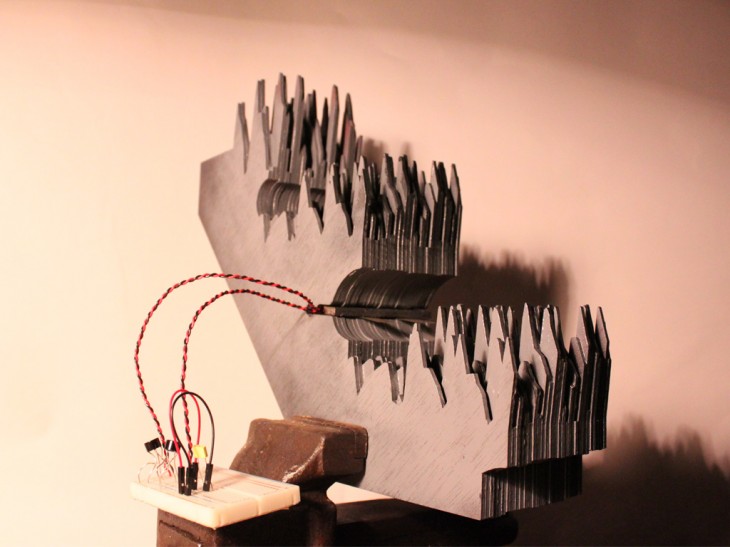 Valldaura, with a location in the hills surrounding Barcelona and an objective of self-sufficiency, is dependent on natural spring water. The house at Valldaura currently does not have access to potable water directly from its site–it is using an inefficient system that does not take advantage of the existent well water. Phytodepuration could potentially supply the house with clean water from the mountain without the assistance of mechanical or chemical treatment.
Valldaura, with a location in the hills surrounding Barcelona and an objective of self-sufficiency, is dependent on natural spring water. The house at Valldaura currently does not have access to potable water directly from its site–it is using an inefficient system that does not take advantage of the existent well water. Phytodepuration could potentially supply the house with clean water from the mountain without the assistance of mechanical or chemical treatment.
Our Design Approach to the Scientific System
Phytodepuration systems are most effective at a large scale. The system’s treatment of water is intrinsically cumulative, and therefore is most advantageous if it includes many iterations in a repetitive module. This repetitive technique will help us reach the level of potability we are aiming for, so our design investigation is focusing on finding one discrete and efficient module for phytodepuration that can be repeated with slight variations (to accommodate different macrophyte varieties). The generation of energy will also be included in the module, in an integrated, nimble technique that requires only lightweight infrastructure.
Balancing Macrophytes + Flowforms: To design a module that takes advantage of a technically efficient system, it is crucial for us to understand the correct process of phytodepuration. A successful system is one that oxygenates water, removes toxins, heavy metals, phosphates, nitrates, and filters out any unwanted fragments while maintaining a neutral ph balance and cool temperature. Certain macrophytes–aquatic plants that grow submerged or partially submerged water–are able to absorb C02 during photosynthesis and give off oxygen simultaneously reducing algae growth. Valldaura’s varied topography, and frequency of steep grade, will allow us to create a site-specific system that incorporates water oxygenation via flowforms. We need to consult a biologist to determine whether we can achieve full oxygenation using only flowforms, and might thereby be able to concentrate primarily on macrophytes that filter and remove toxins.
Our Objective
To construct a “circuit” of modules, comprised of several oscillations between flowforms and macrophyte retention ponds. The system will simultaneously clean water, using macrophytes and flowforms, and intrinsically generate lightweight energy. It is important to create a module system that can repeat, with slight variations to macrophyte type and specific site grade. We would like to create a system that is capable of giving the Valldaura house potable water. We believe a solution can be found that gives the user control over the cleanliness of the water (and the volume of water taken from the site) depending on their needs, in order to create an intelligent system that can save water and generate energy.
After completing the first prototype, the team made a series of observations about the effectiveness and design, and analyzed them. The results of this analysis, in the diagrams below, were used to develop the ideas into a second prototype The following are microscopic images of water, and then for comparison, microscopic images of water with florescence lit beneath a UV lamp. This florescent water was used to visually analyze the movement of water through the second prototype. Some captures from the videos recorded, below, show the differences between how water passes through the different gradients of “tooth” height at different volumes/speeds..jpg)
.jpg)
.jpg)
.jpg)
.jpg)
.jpg) After completing these tests, the team analyzed the form (shown in the diagrams below) to isolate variables affecting the final outcome, and how to proceed with each of those variables in the third prototype. The team also began thinking about how to integrate an overall branching organization in the system.
After completing these tests, the team analyzed the form (shown in the diagrams below) to isolate variables affecting the final outcome, and how to proceed with each of those variables in the third prototype. The team also began thinking about how to integrate an overall branching organization in the system. 
.jpg)
 The third prototype uses these considerations. It embodies a small detail of the system, at 1:1 scale. The detail chosen includes energy collection via lightweight piezoelectric movement in the flow of the water.
The third prototype uses these considerations. It embodies a small detail of the system, at 1:1 scale. The detail chosen includes energy collection via lightweight piezoelectric movement in the flow of the water. 









